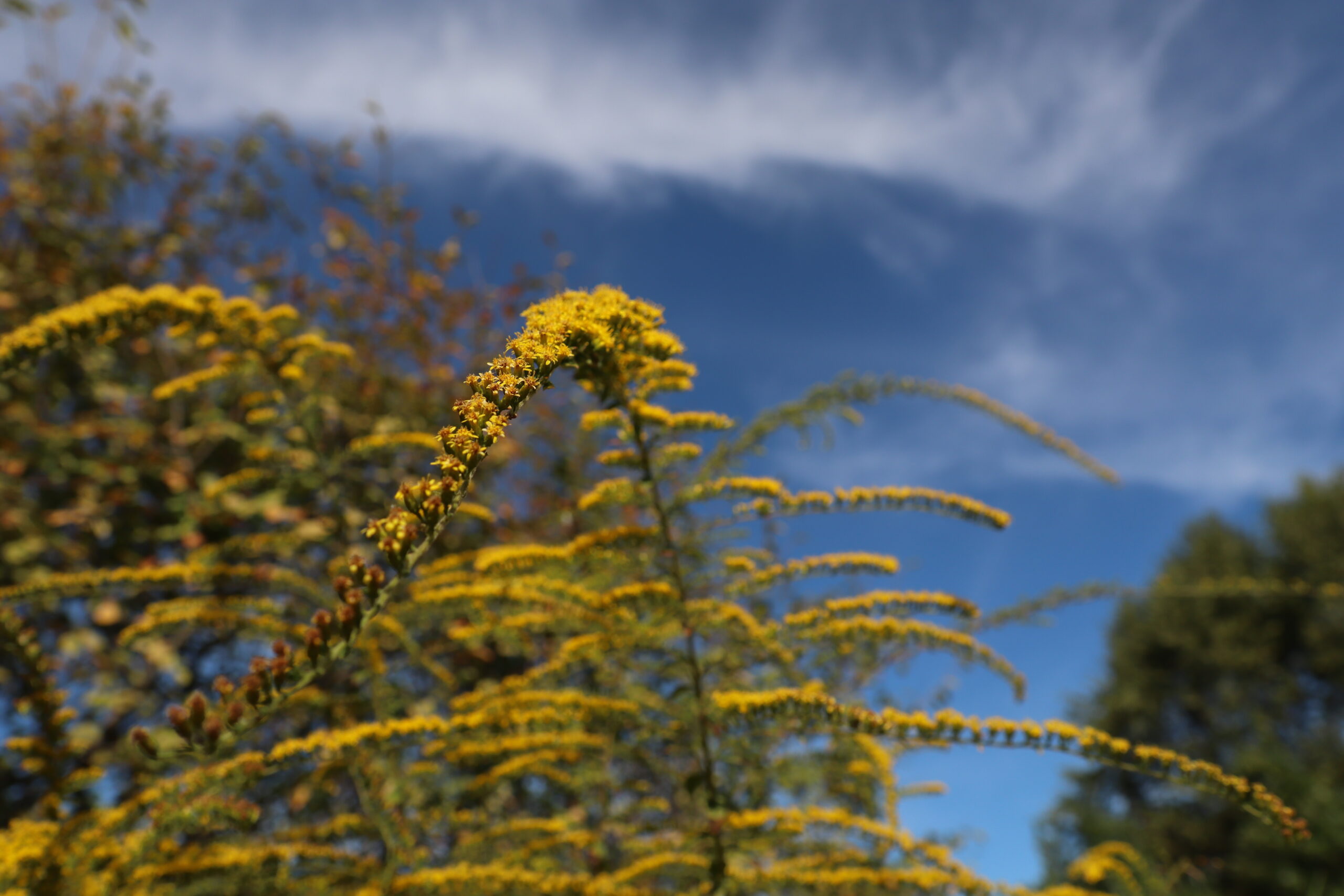Author: Lisa Trapp
There is an interesting time in the gardens when summer is ending but fall hasn’t quite arrived. It is brief, but very special. The late afternoons still provide intense sun and waves of heat, but the early mornings have a chill that whispers of the coming fall. Many flowers are giving way to seeds and husks, but the gardens are still very much alive. It is easy to miss the changes that are happening. At a distance, or while rushing by, the bright yellow flowers of goldenrod (Solidago spp.) can easily be mistaken for dormant shrubs. But they’re worth a closer look.

Found primarily in North America there are more than 120 different species of goldenrod. As part of the Aster family, goldenrods have tremendous value for our pollinators. Goldenrod also provides beauty and color in the landscape, especially when many other plants are going dormant, losing color, and dropping their leaves. Generally, it can be found in woodlands, thickets, swamps, and is especially common in meadow and prairie settings. Just like golden ragwort, goldenrod is often the subject of scrutiny as many misappropriate the plant with the hay fever inducing ragweed. Thankfully, goldenrod is not to blame for those common seasonal allergies. In fact, its pollen is too heavy to be carried by the wind and it relies on animal pollinators to go to seed.
Goldenrods are particularly beloved by pollinators, and according to the National Wildlife Federation, as a genus, they support 115 butterfly and moth species, and 11 native bee species! They also provide important food resources for monarch butterflies during their fall migration. The Xerces society lists goldenrod as being of “special value to bumblebees and honeybees.” They are a wonderful species to plant to promote biological control, as they can attract predatory and parasitoid insects that prey on pests. Their wildlife value does not end there. Song birds eat the insects the plant supports throughout the summer and fall, and many will then eat the plant’s seeds in winter.

Specifically, along the Low Line, we have planted Rough Goldenrod (Solidago rugosa ‘fireworks’), which is native to the Virginia Capital Region and often easy to spot in roadside ditches and along highways. With hairy, upright stems, rough goldenrod can sit up 2 – 5 ft, and has densely packed, small bright yellow floral sprays that bloom from August through October. Goldenrod doesn’t look like much in the throes of summer when many other plants are just beginning to show off, and wild varieties can present a bit thin and weedy. But you shouldn’t judge a book by its cover. Goldenrod may be unremarkable early in the year, but its late season display is part of what makes it so valuable to so many different insects — it provides pollen and nectar resources when other plants are spent.
We have more than one type of goldenrod planted in our urban landscapes. Salidago rugosa ‘fireworks’ can be found in many different plots along the Low Line. Salidago nemoralis can be found in the median at Great Shiplock Park.
REFERENCES:
https://plants.ces.ncsu.edu/plants/solidago/
https://plants.ces.ncsu.edu/plants/solidago-rugosa/
https://www.wildflower.org/plants/result.php?id_plant=soru2
https://www.missouribotanicalgarden.org/PlantFinder/PlantFinderDetails.aspx?taxonid=277368
https://www.nwf.org/Magazines/National-Wildlife/2017/Aug-Sept/Gardening/Goldenrods


